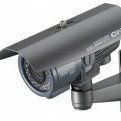Leaderboard
Popular Content
Showing content with the highest reputation since 12/18/2018 in Posts
-
3 pointsI am starting this thread to capture a bunch of information in one spot to assist those with "bricked" cameras due failed firmware upgrades. I bought my first Dahua IP camera just a couple weeks ago. I was impressed & pretty happy with it, but upon reading about new capabilities in newer firmware, I decided to upgrade it. Then like many others on here, I lost access to the Web GUI and the camera was no longer functioning. I spent the last two weeks getting to know everything about these cameras and this thread will capture all this information. It will take me several weeks to document all the information so please be patient. There are a variety of problems that I will try my best to explain and share the possible solutions. I have gotten pretty comfortable with these cameras and have purposely bricked them to various degrees of severity just to validate the recovery process. Most people "brick" their cameras trying to upgrade the firmware. This is not a serious issue and it can be corrected very easily. The camera runs an upgrade service on port 3800. The configTool always shows a default port of 37777 but this is not an issue as it can do the upgrade on port 3800 anyway. Change your port to 3800 and use a firmware file lsted below and you are back in business. I will keep updating this post as I get more time to write all the details around recovery. I will also post links to over 40+ firmware files that and which cameras they will work with. It will take me a bit of time to capture all this information, so please be patient. BRICKED CAMERA? How can you tell? There are several types of "BRICKED" camera conditions and they have varying levels of severity and also varying levels of complexity for recovery. Most are simple and caused by bad firmware uploads. The worst will require a full rebuild of the partitions which load the kernel, software and all other data. 1. The first step in identifying the severity of your issue is to determine what still working on your camera. In order to do that, lets remove as many variables as possible to the troubleshooting process. If possible, connect the camera ethernet and PC ethernet on it's own switch and make sure that no vlan tagging is enabled on the switch. Next, you need to figure out if the IP address is still reacheable. Ping the last known ip address. The default address for most cameras is 192.168.1.108. If you don't know it you can use the arp/ping method to configure which adds as startic arp entry to a new ip address. (This feature is enabled on the camera by default) 2. Once you have a pingable IP, you need to know what services are still active on the camera. This can be done with a simple port scanner. I have added a link to below in tools. 3. Run the port scanner and record which ports are still open. In many cases port 23 and port 3800 will still be open. If this is your situation, it is a very simple fix. If no ports are open, you will need to do a full image load which is more complex. The typical ports that you would see are: 23 - Telnet access 80 - Web User interface 443 - SSL 554 - Real time streaming port 3800 - Upgrade Deamon 5000 - UPnP 37777 - TCP Video streaming 37778 - UDP Video Streaming 42323 - Real time remote runner Plus a whole bunch more of UDP ports and more TCP ports REPAIR WITH PORT 3800 Download a step by step guide (DAHUA IP Camera Recovery v1.0.pdf) with screen prints @ http://tinyurl.com/lbl3up7 1A. If port 3800 is open you can connect with the Dahua Config tool (link below in tools). I tdefault to port 37777 but change it to 3800 as this port where the upgrade daemon is listening. Port 37777 is a redirect but it won't work if your firmware has failed. Launch the config tool and click on login button. Type the IP address , username and password then port 3800. Open a know working firmware file and upload to the camera. 1B. If port 3800 is not open, go to the next step to enable port 3800. 2. If you have telnet access, you can login with putty. Link to putty below in tools. The default Web UI password is admin / admin. In older firmware the telnet account is root / vizxv In newer firmware the telnet account is admin / 7ujMko0+"web UI password" ---> 7ujmko0admin Once connected you can execute a ps command to see running processes. /usr/sbin/upgraded process is what listens on port 3800 for the firmware binary file. There is also another copy in /var/tmp/ A useful tip for watching the upgrade process is to kill the "upgraded" process that is running and re-launch it in the foreground to watch the upgrade. ~#>ps 625 root 0:00 [mtdblock3] 630 root 0:00 [mtdblock4] 635 root 0:00 [mtdblock5] 772 root 0:00 [ubi_bgt7d] 776 root 0:00 [ubifs_bgt7_0] 790 root 0:00 /sbin/telnetd 798 root 0:00 [OSA_796_1] 860 root 0:00 syshelper elper 60 861 root 0:00 /usr/sbin/upgraded 869 root 0:00 [dsplogd] 870 root 0:00 [encode_guard] 889 root 0:00 [flush-ubifs_6_0] 923 root 3:29 ./VideoDaemon AEWB AF TVOUT ~#> kill -9 861 ~#> /usr/sbin/upgraded [OSA-APP] OSA Build on Apr 19 2014 at 09:55:50. [OSA-APP] SVN NUM: 1609. [libpdi] libpdi.so Build on Apr 19 2014 at 10:06:34. [libpdi] SVN NUM: 13790. [libpdi] Flashtype = 4,patSize = 100000,rwSize = 800,ersSize = 20000 22:52:46|[crypt] crypt_open ok! Name: upgraded, bulid date: Apr 19 2014 09:17:58, svn: 255 [libpdi] >-------getSystemInfo-------> Fail to get env authcode! [libpdi] Get authcode error @@@@ buf = PZC4MU056W00XXX 22:52:52|[pdc] WARN (MISC_ioctl|493): Get SdCard cfg failed ! [libpdi] deviceType: IPC-HFW4300S-V2 [libpdi] processor: A5S88 [libpdi] hardwareVersion: 1.00 [libpdi] appAutoStart: 1 [libpdi] serialNumber: PZC4MU056W00XXX [libpdi] processorCount: 1 [libpdi] deviceClass: IPC [libpdi] noPtz: 1 [libpdi] noSdCard: 1 [libpdi] bandWidth: 48 [libpdi] <-------getSystemInfo-------< UPGRADED_MSG: Can't Open /mnt/mtd/Config/passwd UPGRADED_MSG: Login success! UPGRADED_MSG: Kill 976 successful [libpdi] Read: blkIndex: 1,pageIndex: 0,byteIndex: 0 ,fLag: ff [libpdi] Write: blkIndex: 1,pageIndex: 0,byteIndex: 0 ,fLag: 0 UPGRADED_MSG: reset_watchdog UPGRADED_MSG: Receive A4(alarm) UPGRADED_MSG: reset_watchdog UPGRADED_MSG: Receive A1(alive package) UPGRADED_MSG: reset_watchdog UPGRADED_MSG: Received : 29868252, FileSize : 29868252 UPGRADED_MSG: Download Complete UPGRADED_MSG: DoDownLoad success! UPGRADED_MSG: Flash init success UPGRADED_MSG: hwid file success! Fail to get env native! UPGRADED_ERR: LINE: 1074: invalid file: Install.lua UPGRADED_MSG: zip file total size: 40900220 [libpdi] >-------getSystemInfo-------> Fail to get env authcode! [libpdi] Get authcode error @@@@ buf = PZC4MU056W00XXX 22:53:10|[pdc] WARN (MISC_ioctl|493): Get SdCard cfg failed ! [libpdi] deviceType: IPC-HFW4300S-V2 [libpdi] processor: A5S88 [libpdi] hardwareVersion: 1.00 [libpdi] appAutoStart: 1 [libpdi] serialNumber: PZC4MU056W00XXX [libpdi] processorCount: 1 [libpdi] deviceClass: IPC [libpdi] noPtz: 1 [libpdi] noSdCard: 1 [libpdi] bandWidth: 48 [libpdi] <-------getSystemInfo-------< UPGRADED_MSG: packet.name: SD6XXX, board.name: IPC-HFW4300S-V2 UPGRADED_MSG: packet.hardver: , board.hardver: UPGRADED_MSG: packet.name: IPC-HX3XXX, board.name: IPC-HFW4300S-V2 UPGRADED_MSG: packet.hardver: , board.hardver: UPGRADED_MSG: Verify version success Header CRC Checking ... OK Image Name: kernel.img Image Type: kernel.img (gzip compressed) Data Size: 2546876 B, Bytes = 2.43 MB Load Address: 0XC80000 Data CRC Checking ... OK Programing start at: 0XC80000 [libpdi] write update Flag [libpdi] Read: blkIndex: 0,pageIndex: 0,byteIndex: 0 ,fLag: ff [libpdi] Write: blkIndex: 0,pageIndex: 0,byteIndex: 0 ,fLag: 55 [libpdi] Flash_createPartionTab:6 [libpdi] Erase Partion: 6 [libpdi] FlashErase: addr= 0x0xc80000,blkNum:44, blkSize:0x20000,len:0x580000 <5>UBIFS: un-mount UBI device 2, volume 0 <5>UBIFS: un-mount UBI device 4, volume 0 Upgrade : Complete Total 6%... Header CRC Checking ... OK Image Name: partition-x.cramfs.img Image Type: partition-x.cramfs.img (gzip compressed) Data Size: 4160 B, Bytes = 0.00 MB Load Address: 0X500000 Data CRC Checking ... OK Programing start at: 0X500000 [libpdi] Flash_createPartionTab:3 [libpdi] Erase Partion: 3 [libpdi] FlashErase: addr= 0x0x500000,blkNum:8, blkSize:0x20000,len:0x100000 Upgrade : Complete Total 6%... Header CRC Checking ... OK Image Name: romfs-x.ubifs.img Image Type: romfs-x.ubifs.img (gzip compressed) Data Size: 7340096 B, Bytes = 7.00 MB Load Address: 0X1200000 Data CRC Checking ... OK Programing start at: 0X1200000 [libpdi] Flash_createPartionTab:7 [libpdi] Erase Partion: 7 [libpdi] FlashErase: addr= 0x0x1200000,blkNum:64, blkSize:0x20000,len:0x800000 Upgrade : Complete Total 24%... Header CRC Checking ... OK Image Name: pd-x.ubifs.img Image Type: pd-x.ubifs.img (gzip compressed) Data Size: 1966144 B, Bytes = 1.88 MB Load Address: 0X940000 Data CRC Checking ... OK Programing start at: 0X940000 [libpdi] Flash_createPartionTab:5 [libpdi] Erase Partion: 5 [libpdi] FlashErase: addr= 0x0x940000,blkNum:26, blkSize:0x20000,len:0x340000 Upgrade : Complete Total 28%... Header CRC Checking ... OK Image Name: user-x.ubifs.img Image Type: user-x.ubifs.img (gzip compressed) Data Size: 21233728 B, Bytes = 20.25 MB Load Address: 0X2200000 Data CRC Checking ... OK Programing start at: 0X2200000 [libpdi] Flash_createPartionTab:9 [libpdi] Erase Partion: 9 [libpdi] FlashErase: addr= 0x0x2200000,blkNum:204, blkSize:0x20000,len:0x1980000 Upgrade : Complete Total 80%... Header CRC Checking ... OK Image Name: custom-x.ubifs.img Image Type: custom-x.ubifs.img (gzip compressed) Data Size: 1966144 B, Bytes = 1.88 MB Load Address: 0X600000 Data CRC Checking ... OK Programing start at: 0X600000 [libpdi] Flash_createPartionTab:4 [libpdi] Erase Partion: 4 [libpdi] FlashErase: addr= 0x0x600000,blkNum:26, blkSize:0x20000,len:0x340000 Upgrade : Complete Total 85%... Header CRC Checking ... OK Image Name: web-x.ubifs.img Image Type: web-x.ubifs.img (gzip compressed) Data Size: 5505088 B, Bytes = 5.25 MB Load Address: 0X1A00000 Data CRC Checking ... OK Programing start at: 0X1A00000 [libpdi] Flash_createPartionTab:8 [libpdi] Erase Partion: 8 [libpdi] FlashErase: addr= 0x0x1a00000,blkNum:64, blkSize:0x20000,len:0x800000 Upgrade : Complete Total 99%... [libpdi] Read: blkIndex: 0,pageIndex: 1,byteIndex: 0 ,fLag: ff [libpdi] Write: blkIndex: 0,pageIndex: 1,byteIndex: 0 ,fLag: aa Upgrade : Complete Total 100%... UPGRADED_MSG: will reboot system [libpdi] rebootSystem: i will reboot [libpdi] Read: blkIndex: 1,pageIndex: 0,byteIndex: 0 ,fLag: ff [libpdi] Write: blkIndex: 1,pageIndex: 0,byteIndex: 0 ,fLag: 0 [libpdi] pdi:system will reboot!! Here you can see each partition being loaded wit the individual img files. I will write a quick how to on loading each one individually at a later time. If you chose a valid firmware file, you will be back in working order. If you still have problems, repeat with another firmware file till you have a valid file. The IPC-HFW4300S-V2 is not natively compatible with all other 4300S firmware. I am in the process of writing a how to that explains how to over come this issue. UNBRICK WITH UBOOT via SERIAL NOTE: This section is coming soon... I'm gathering all the images I need for various camera types OTHER USEFUL INFORMATION (to be sorted later) The firmware consists of several images that are loaded into various partitions in flash in a UBI file system. You can load each partition separately if needed. More on this later.... (I'll put a guide together on flashing and recovering partitions) Once you telnet into the camera, there are number of useful binaries in the user shell that can help correct and diagnose some of the problems people are experiencing. One of the helpful steps is to kill the /var/tmp/upgraded process and run it in the foreground so you can see what is going on and easily capture error messaged. The /var/tmp/upgraded process is what opens the port 3800 and allows you to connect to the camera with the config tool if your web services have failed. There is also another copy in usr/sbin/. Also, in there is a command to reset all the parameters back to factory defaults (username, password, ip address back to 192.168.1.108 etc.) This can be accomplished with /sbin/clearparam. Another issue that people run into is the constant reboot issue. This can be caused by a failed process. The main application which provides all the camera capabilities (web interface, streaming, etc.) is /usr/bin/sonia. This process is what makes most firmware different from version to version (sort of). There are also changes to the web partition which contains the web server pages that /usr/bin sonia hosts on port 80. The sonia process is invoked by a shell script in init.d and if the process is killed, the camera reboots after a few minutes. This has cause many people issues when trying to "unbrick" the camera since you only have a few minutes between reboots. To stop the reboots you can update the flash. There is a parameter called appauto that tells the camera to auto start /us/bin/sonia. If you want the camera to start and not invoke the shell script that launches sonia, you need to set appauto to 0. This will stop the camera from rebooting when sonia is not running. This cam be accomplished by running '/sbin/appauto 0'. To turn it back on, just run /sbin/appauto 1. This writes the boot parameter in flash that the kernel reads before starting the process. You can check the current status of the appauto bootparameter with 'cat /proc/dahua/bootpara' It will only show what the parameter was when you booted up, so if you changes it you need to reboot to see the change in /proc/dahua/bootpara. Realtime streaming URL - rtsp://192.168.1.108/cam/realmonitor?channel=1&subtype=0&proto=Onvif You can change the subtype to 1 for the secondary stream also you can add user:password@ in front of the IP address if you have the permissions set requiring it. You can use the HTTP API to configure some parameters that are not yet in the web UI. For instance, another member discovered he could enable NFS through the web UI in addition to the local SD card. This config is not possible through the web interface as you need to pick one or the other. These documents details the API of Dahua video products (links provided to some of the versions below). Programmers or users can access and configure Dahua video products through the API. Every setting of the camera is available through the API whereas only a small number are available through the WEB interface. The document with version 1.10 is available with firmware version 2.0 and above. This document with version 1.20, 1.21, 1.22, 1.23,1.24,1,25,1,26,1,27,1,28 is available with firmware 2.210 and above.This document with version 1. 29 ,1.30, 1.31, 1.32, 1.33, 1.34, 1.35, 1.36 is available with firmware 2.210 and above.This document with version 1.37 is available with firmware 2.212, 2.4 and above. I have also done a bit of testing around the tftp process that is invoked in u-boot that looks for upgrade_info_7db780a713a4.txt and failed.txt. I think with a little more work, I'll figure out if there is a recovery method using tftp without serial access. This would be necessary if you lose telnet access and need to rebuild the kernel partition that hosts telnetd. Tools DAHUA IP Camera Recovery v1.0.pdf....................... http://tinyurl.com/lbl3up7 Port Scanner .................................................. http://tinyurl.com/q53pojg Putty .............................................................. http://tinyurl.com/lvbbmsq Tftp Server ..................................................... http://tinyurl.com/m46wnhe Dahua Docs & Tools DAHUA_HTTP_API 1.0 .pdf ................................................ http://tinyurl.com/lb43lga DAHUA_HTTP_API_1.23.pdf ................................................ http://tinyurl.com/lrwye3k DAHUA_HTTP_API_FOR_IPC 1.28.pdf ........................................ http://tinyurl.com/kskrcay DAHUA_HTTP_API_FOR_IPC&SD-V1.36.pdf .................................... http://tinyurl.com/mooccf9 DAHUA_HTTP_API_FOR_IPC&SD-V1.37.pdf .................................... http://tinyurl.com/kvyddfp DAHUA_HTTP_API_FOR_DVR_V1.29.pdf ....................................... http://tinyurl.com/klc72tr General_ConfigTool_Eng_V1.0.5.R.120428.zip ........................ http://tinyurl.com/mwlzbb3 General_ConfigTool_Eng_V1.06.1.T.120807.zip ........................ http://tinyurl.com/leudphu General_ConfigTool_Eng_V1.07.2.R.130304.zip ....................... http://tinyurl.com/obs5ud7 General_ConfigTool_Eng_V1.07.3.R.130701.zip ....................... http://tinyurl.com/o6p628f <---- Use this one General_ConfigTool_Eng_V2.00.0.R.140410.zip ........................ http://tinyurl.com/nbqtgev Firmware Files Firmware files are grouped by camera type and video signal (NTSC --> Eng_N / PAL --> Eng_P / or BOTH --> Eng_NP) Files are ordered by version number with the latest Firmware in blue. Files with DH_ prefix are DAHUA direct firmware files and those with General_ prefix are general release for OEM cameras but I've had good luck with both. DH_IPC-HX1100_Eng_NP_V2.210.0000.3.R.20140416.bin .................................................. http://tinyurl.com/m2jf3qv General_IPC-HX3(2)XXX_Eng_N_V2.210.0001.0.R.20130517.bin ............................................... http://tinyurl.com/q98zg9x General_IPC-HX3(2)XXX_Eng_P_V2.210.0001.0.R.20130517.bin ................................................ http://tinyurl.com/nekapn3 General_IPC-HX3(2)XXX_Eng_NP_V2.210.0001.0.R.20130517.bin ............................................. http://tinyurl.com/p59ym6z General_IPC-HX3(2)XXX_Eng_P_V2.211.0000.0.R.20130726.bin ................................................ http://tinyurl.com/my54r9z General_IPC-HX3(2)XXX_Eng_N_V2.212.0000.0.R.20131206.bin ............................................... http://tinyurl.com/lrvtm2z General_IPC-HX3(2)XXX_Eng_P_V2.212.0000.0.R.20131206.bin ................................................ http://tinyurl.com/n9rv23n General_IPC-HX3(2)XXX_Eng_N_V2.212.0001.0.R.20131224.bin ............................................... http://tinyurl.com/l5kg2d9 General_IPC-HX3(2)XXX_Eng_P_V2.212.0001.0.R.20131224.bin ................................................ http://tinyurl.com/q6c2gox DH_IPC-HX3(2)XXX_Eng_NP_8M_V2.212.0000.4.R.20140307.bin ............................................... http://tinyurl.com/mnzx33h DH_IPC-HX3(2)XXX_Eng_NP_8M_V2.212.0000.5.R.20140326.bin ............................................... http://tinyurl.com/ke285w5 DH_IPC-HX3(2)XXX_Eng_NP_8M_V2.212.0000.6.R.20140419.bin ............................................... http://tinyurl.com/mllzcox General_IPC-HX3(2)XXX_Eng_P_V2.420.0000.0.R.20140414.bin ................................................ http://tinyurl.com/nftaogy DH_IPC-HX3(2)XXX_Eng_N_V2.420.0000.0.R.20140414.bin .................................................... http://tinyurl.com/ma5q64d General_IPC-HX5(4)XXX_Eng_P_V2.210.0000.2.R.20130821.bin ................................................. http://tinyurl.com/pdcdmdk General_IPC-HX5(4)XXX_Eng_N_V2.210.0000.4.R.20130911.bin ........................................................ http://tinyurl.com/pdoxjzj General_IPC-HX5(4)XXX_Eng_P_V2.210.0000.9.R.20131217.bin ........................................................ http://tinyurl.com/p3g4t54 General_IPC-HX5(4)XXX_Eng_N_V2.210.0000.10.R.20140111.bin ...................................................... http://tinyurl.com/mnjpd79 General_IPC-HX5(4)XXX_Eng_P_V2.210.0000.12.R.20140225.bin ...................................................... http://tinyurl.com/nssnph6 DH_IPC-HX5(4)XXX_Eng_NP_V2.210.0000.12.R.20140225.bin ..................................................... http://tinyurl.com/lcjr8xv DH_IPC-HX5(4)XXX_Eng_NP_V2.210.0000.16.R.20140421.bin ..................................................... http://tinyurl.com/k67gu9u DH_IPC-HX5(4)XXX_Eng_NP_V2.210.0000.18.R.20140429.bin .................................................... http://tinyurl.com/n779scx General_IPC-HX5(4)XXX_Eng_N_V2.210.0000.21.R.20140613.bin ...................................................... http://tinyurl.com/qd2thhe General_IPC-HX5(4)XXX_Eng_P_V2.210.0000.21.R.20140613.bin ...................................................... http://tinyurl.com/p8q75b4 General_IPC-HX5(4)XXX_Eng_N_V2.400.0000.0.R.20131231.bin ........................................................ http://tinyurl.com/kmd7hu9 DH_IPC-HX5(4)XXX_Eng_N_Stream3_V2.420.0000.0.R.20140419.bin .................................................. http://tinyurl.com/mb75g2n DH_IPC-HX5(4)XXX_Eng_P_Stream3_V2.420.0002.0.R.20140621.bin ............................................ http://tinyurl.com/laj29k5 General_IPC-HX5(4)XXX_Eng_N_Stream3_V2.420.0000.0.R.20140419.bin ......................................... http://tinyurl.com/mzw85fz General_IPC-HX5(4)XXX_Eng_P_Stream3_V2.420.0000.0.R.20140419.bin ......................................... http://tinyurl.com/ov6krph General_IPC-HX5(4)XXX_Eng_P_Stream3_P2P_V2.420.0000.0.R.20140419.bin ................................. http://tinyurl.com/oxgblkq General_IPC-HX5(4)XXX_Eng_N_Stream3_V2.420.0002.0.R.20140621.bin ......................................... http://tinyurl.com/kejg3fv General_IPC-HX5(4)XXX_Eng_P_Stream3_V2.420.0002.0.R.20140621.bin ......................................... http://tinyurl.com/pfmevdu General_IPC-HX5(4)XXX_Eng_N_Stream3_V2.420.0003.0.R.20140930.bin ............................................... http://tinyurl.com/kchslos General_IPC-HX5(4)XXX_Eng_N_V2.420.0003.0.R.20140930.bin ........................................................ http://tinyurl.com/ok4f8fx General_IPC-HX5(4)XXX_Eng_N_Stream3_V2.420.0005.0.R.20141205.bin .............................................. http://tinyurl.com/qbrfg3k General_IPC-HX5(4)XXX_Eng_P_Stream3_V2.420.0005.0.R.20141205.bin ......................................... http://tinyurl.com/ot99vgw DH_IPC-HX8XXX_Eng_NP_V2.400.0000.2.R.20140506.bin .......................................................... http://tinyurl.com/lbar98x I will also post the bare metal img files when I get some time which contain the firmware and all the img files including the update.img that can be used for serial recovery. I have just started the process of uploading firmware... There are much more to come as well as many more camera models. Also if you have any you want to share please PM me what you have and where I can link them to this thread. Thanks to Euly for sharing firmware files! ___________________________________ IMPORTANT NOTE FOR IPC-HFW4300S-V2 CAMERAS The new camera appears to have differences (a few that I already found) that makes some of the general firmware incompatible with them. I have found a workaround, but it is complex. I will try to summarize it in a separate thread in the following weeks. I will also repackage the newest firmware files in versions that will work for the V2 cameras. Stay tuned! In the meantime, you can use General_IPC-HX5(4)XXX_Eng_N_V2.210.0000.21.R.20140613.bin or the PAL equivalent to recover your camera. Well, that's all I have time to share for now, but I'll do my best to put together a comprehensive guide to the inner workings of these cameras and a guide to unbrick in any failed software situation. Thanks and take care. Rob
-
3 pointsFantastic I have been looking for something to make me fall asleep for years .... your vids do the trick. You are giving so much bad information on at least 3 videos (sorry I started to nod off then) take your vid on dahua 4K mini ...... the audio on the back is not from cameras ..... it’s 1 local mic and 1 local speaker audio on ip systems is based in the camera data with audio enabled cameras. Every man man and his dog are doing cctv YouTube some do it excellent some very bad... yours are more a advert for out of date products ...... 3 weeks ago you did a video of a 1.3 mp camera ....... others did vids on 1.3mp years ago. Need a coffee now to wake up a little
-
3 pointsThat is not a 360 camera. And if you think that cheap crap is better than IP for $100 then your wrong. table top cameras are pointless. People need to think and reaserch what they need. table top cameras can not see who comes to your door.... Can't detected any damage to cars outside......can not see if damage don't to gardens of home exterior and that table top camera for $28. What about in home privacy. Why have a camera in your home living room that footage and sound goes off to a 3rd party could be 100s of strangers watching you in your own home day and night so is $28 home security .....NO. STAY AWAY FROM CHEAP GEEK CRAP
-
2 pointsI've wanted to make this list for a while, and hopefully it will help answer some simple questions or guide newcomers on their IP video quest. Feel free to add, change, or refine this! Most Popular Camera Manufactures (on this forum): ACTi (http://www.acti.com) - Midrange camera - good price - free software. Avtech (http://www.avtech.com.tw) - Has good 'push' support for events to mobile devices. Avigilon (http://www.avigilon.com) - Similar to Axis cost - must buy through dealer - good software/support. Axis (http://www.axis.com) - Popular choice - higher end cameras get expensive - easy to find online for sale - free + paid software options. Dahua (http://www.dahuasecurity.com) - Re-branded as Q-See - low price - difficult to find updates/support. Geovision (http://www.geovision.com.tw) - Midrange - have some LPR cameras. Grandstream (http://www.grandstream.com) - Low cost - have some unique features. Hikvision (http://www.hikvision.com) - Becoming more popular - re-branded as Lorex/Swann systems from Costco. IQinVision (http://www.iqeye.com) Midrange pricing. Mobotix (http://www.mobotix.com) - Cameras made in Germany - reliable but expensive - no moving parts to fail in their cameras. Vivotek (http://www.vivotek.com) - Midrange pricing. Other Camera Manufactures: Arecont (http://www.arecontvision.com/) Brickcom (http://www.brickcom.com/) Bosch (http://www.boschsecurity.us/en-us/ProductInformation/Cameras/NetworkCameras/) Canon (http://www.usa.canon.com/cusa/professional/products/security_video_solutions/network_cameras) GE (Unknown Website Address) Honeywell (http://www.honeywellvideo.com/products/cameras/ip/index.html) JVC (http://pro.jvc.com/prof/attributes/category.jsp?productId=PRO5.2) Panasonic (http://www.panasonic.com/business/psna/products-surveillance-monitoring/index.aspx) Pelco (http://www.pelco.com/sites/global/en/home.page) Samsung (https://www.samsung-security.com/) Sony (http://pro.sony.com/bbsc/ssr/mkt-security/) Toshiba (http://www.toshibasecurity.com/) IR Illuminators: Raytec (http://www.rayteccctv.com/) Axton (http://www.axtontech.com/) Iluminar (http://www.iluminarinc.com/) +Other Generic Brands Accessories: PoE Switch (Unmanaged, or Managed which allows remote powering on/off of specific ports) (TRENDnet, Netgear, D-Link, Cisco, Axis, etc.) Ethernet Cable (Regular/Burial Grade) Lenses (C/CS/S/D Mounts) IR Illuminators (Discussed Above) Enclosures (Pelco, Videolarm, Axis, Generic Brand, etc.) PIR Sensor (Optex, Bosch, etc) UPS Battery Backup System Popular Places To Buy: [Redacted - do a search on the forum for general ideas ] Video Recording Software: ACTi VMS (Free) - Only supports ACTi Cameras. Avigilon (Per channel: Core ~$100, Standard ~$200, Enterprise ~$350) - Purchase through authorized dealers. Axis Camera Companion (Free) - Only supports certain (newer) Axis Cameras. 16 cameras max. Axis Camera Station (~$90/license) Axxon Next (Free for 16 channels) (http://www.axxonsoft.com/products/axxon_next/) BlueIris ($29.95 - $49.95) (http://blueirissoftware.com/) - Supports a large variety of network cameras. exacqVision ($50 - $150/license + $25 yearly for optional updates) Genetec (Expensive) Geovision (Free) Luxriot ($99 - $1000+) Milestone XProtect (Free - $1000+) Mobotix Control Center (Free) - Supports other cameras for viewing. May be able to record with MXServer. OnSSI (Unknown) Vitamin D (Free/$49/$199) (http://www.vitamindinc.com/index.php) - PC + Mac Compatible Zoneminder (Free) - Open source Linux software. ...Etc, Most Manufactures Provide Their Own Software. Network Video Recorders (NVR's)/NAS Stations: Synology (1 License Included - ~$50 /per additional license) Dahua QNAP Luxriot NUUO Hikvision iPhone Viewing Apps: Netcam Viewer (Free/$5.99) (http://bit.ly/18UfXMs) Live Cams Pro ($1.99) (http://bit.ly/19RAleQ) QCamPro ($7.99) (http://bit.ly/14iCWxR) Official Mobotix (Free) (http://bit.ly/15XNtmo) IP Cam Viewer Pro ($3.99) (http://bit.ly/10QAwYn) Dahua iDMSS Lite (Free) (http://bit.ly/110ZjmV) Dahua iDMSS Plus ($4.99) (http://bit.ly/12FyWpw) +Specific Manufacturer's Apps (Q-See, Hikvision, etc) (Search Manually) - Typically better integrated then 3rd party apps. Android Viewing Apps: IP Cam Viewer Pro ($3.99) (http://bit.ly/TG6OyB) Dahua gDMSS Lite (Free) (http://bit.ly/12zjvAs) Dahua gDMSS Plus ($5.00) (http://bit.ly/12FzfAA) +Specific Manufacturer's Apps (Q-See, Hikvision, etc) (Search Manually) - Typically better integrated then 3rd party apps. Review Sites/Sample Videos: Network Camera Critic (http://www.networkcameracritic.com/) Mateusz CCTVnerd (http://www.youtube.com/user/mateuszfen) Megapixel Cameras - Images and Demos (viewtopic.php?f=19&t=11322) Plazor (http://www.plazor.com) Axis YouTube Channel (http://www.youtube.com/user/AxisCommunications) Avigilon YouTube Channel (http://www.youtube.com/user/Avigilon) MXInstaller (http://www.mxinstaller.com/) Companies That Rebrand/Resell: Swann (Rebrands Hikvision Equipment) Lorex (Rebrands Hikvision Equipment) Q-See (Rebrands Dahua Equipment) Toshiba (Appears To Rebrand Vivotek) Cisco (Sometimes Rebrands Pelco) Other Helpful Links: CCTV Lens Calculator (http://www.jvsg.com/online/#) Identification And Recognition Guide (http://www.axis.com/academy/identification/index.htm) - Make sure you have the correct resolution for your application. Security Today - IP Cameras (http://security-today.com/directory/list/ip-video.aspx) CCTV Frame Rates Comparison ( ) - Recordings don't necessarily have to be 30fps for desired results. IP Video 101 Training (http://ipvm.com/report/ip_video_training_course_101) Live Demo Cameras: Mobotix Cameras (http://www.mobotix.ro/live-ro-p-3.html) or (http://comsurv.com/live-video-cameras/) Axis Cameras (http://www.axis.com/camerademo/) or (http://ipcameralive.com/) Mixture (http://camelive.info) Terminology: CBR: "Constant bit rate [encoding] means that the rate at which a codec's output data should be consumed is constant." (i.e. the amount of data flowing from camera to user/nvr is always constant - even during movement or lack thereof. [See also VBR]) DSD: (http://www.dsdcctv.com/) DVR: "a consumer electronics device or application software that records video in a digital format to a disk drive, USB flash drive, SD memory card or other local or networked mass storage device." Edge Recording: "The concept of taking audio/video from a camera, and storing it at the edge of the Ethernet network instead of transporting it across the network to a centralized recording facility such as a Network Video Recorder." (Most cameras have this ability now.) IR/IR Illuminator: LED's (often a separate device) which provide illumination for cameras in near to total darkness. The light produced cannot be seen by the human eye. The camera must be sensitive to IR for this to be useful (some cameras have 'fixed' IR cut filters). 'White light' illuminators are also available. These produce light visible to the human eye and to a camera with or without an IR cut filter. LPR/ANPR/AVI/CPR/LAPI: "A mass surveillance method that uses optical character recognition on images to read vehicle registration plates." NAS: Basically a box filled with hard drives for storage of data. Some cameras have the ability to record directly to these networked boxes without the need for an always on or dedicated computer. NVR: "A software program that records video in a digital format to a disk drive, USB flash drive, SD memory card or other mass storage device." ONVIF: "Open Network Video Interface Forum (ONVIF) is a global and open industry forum with the goal to facilitate the development and use of a global open standard for the interface of physical IP-based security products." PIR: Passive Infrared "is an electronic sensor that measures infrared (IR) light radiating from objects in its field of view. They are most often used in PIR-based motion detectors." PoE: "A system to safely pass electrical power, along with data, on Ethernet cabling." UPS: "uninterruptible power supply...is an electrical apparatus that provides emergency power to a load when the input power source, typically mains power, fails." VBR: "Variable bit rate files vary the amount of output data per time segment." (i.e. Less data during still scenes, more data during high movement periods.) WDR: "'Wide dynamic range' describes an attribute of an imaging system which can capture greater scene details from shadows to highlights than normal." Commonly Asked Questions: Q: "Which brand or manufacturer should I buy?" A: Each brand has its strengths and weakness, whether it be price, size, low light capabilities, resolution, frame rate, support, software, compatibility, etc. There really isn't one magical brand or camera. Each security scenario is different and requires a unique solution. Q: "Where can I buy an IP HD PTZ Outdoor Camera for $200?" A: Probably not going to happen. PTZ cameras are expensive because of all the motors, belts, gears, and such. Perhaps instead consider using several fixed multi-megapixel HD cameras instead for coverage. Q: "How do I embed/add video from a camera to a website?" A: See: http://www.networkcameracritic.com/?p=1290 or http://bit.ly/10rC8WV Q: "How do I view my cameras on my TV/Monitor? A: Consider using an Android powered HDMI dongle. These mini computers are powerful and compact enough to be attached to a TV or monitor for camera viewing using an Android app. Also see: http://www.networkcameracritic.com/?p=1049 Q: "Should I buy a Foscam?" A: These cameras are not typically discussed here because of their poor reliability and feature set. They are often cloned and copied making firmware updates and support hard to come by. So in short, probably not. However if you are just starting with IP cameras, many members have since upgraded from these over time to bigger and better. Q: "How do I view my camera(s) from the internet?" A: You need to setup your router for port forwarding. Here are several guides to assist you. See: http://www.networkcameracritic.com/?p=124 or http://bit.ly/184DTvf Q: "What shutter speed should I use during low light/night?" A: "Typically 1/30 of a second is as low as you would want to have it set. Any longer and moving objects will be blurry making the footage less then useful. Q: "Should I use a wireless camera for my application?" A: Wifi signals, especially at long distances, can drop or become unreliable. They also become targets of hacking "resulting in free access to your personal cameras (EXTREMLY DANGEROUS) or blocked cameras, ones that will not record anything." It is best to use a hardwired connection via cable for installations. PoE installation can supply signal and power over one cable for easy installation. If a cable is not an option consider using a dedicated wifi access point, like the type made by Ubiquiti Networks.
-
2 pointshi not a problem .... glad it work for you. any other problems just pm me
-
2 pointsHi I would keep testing simple ...remove camera and plug it into another location ..... if this is just a camera swap to start with it could just be the camera faulty are you using standard analog analog or HD ...... and have you got the right region camera PAL / NTCS
-
2 pointsSorry just read your post again and seen Coax in the title. Check the termination switch/setting on the DVR if there is one! Using a voltmeter set to Ohms go to the camera and check the resistance of the coax cable as it goes back to the DVR, it should read 75 ohms plus the resistance of the cable so probably about 80 - 100 ohms depending on the cable length/quality. If you are reading in the M ohms range then the cable is un-terminated, or has possibly been damaged, next go to the DVR and remove the camera signal lead and measure the resistance of the video input this should be 75 ohms.
-
2 pointsWelcome Charlie! Billy in Tennessee here. I'm here to learn modern technology and software.
-
2 pointsHi. No don’t update Remove your no ip account Your using the Apollo ... good system Delete your no ip and follow the link I have sent to your PM Much more secure and protected
-
1 pointI bought Dahua DH-IPC-HFW1320S IP camera on eBay, and I have problem setting up FTP upload of recordings to FTP server. Here are my settings: For remote directory I used "/", "/test", "test" or leave blank and results are always same. This log entries shows that motion detection was triggered For first I used ftp server on internet, later I started filezilla ftp server on my pc. This is log form FileZilla FTP server. (000010)10.2.2017 3:32:07 - (not logged in) (192.168.251.213)> Connected on port 21, sending welcome message... (000010)10.2.2017 3:32:07 - (not logged in) (192.168.251.213)> 220-FileZilla Server 0.9.60 beta (000010)10.2.2017 3:32:07 - (not logged in) (192.168.251.213)> 220-written by Tim Kosse (tim.kosse@filezilla-project.org) (000010)10.2.2017 3:32:07 - (not logged in) (192.168.251.213)> 220 Please visit https://filezilla-project.org/ (000010)10.2.2017 3:32:07 - (not logged in) (192.168.251.213)> USER test (000010)10.2.2017 3:32:07 - (not logged in) (192.168.251.213)> 331 Password required for test (000010)10.2.2017 3:32:07 - (not logged in) (192.168.251.213)> PASS **** (000010)10.2.2017 3:32:07 - test (192.168.251.213)> 230 Logged on (000010)10.2.2017 3:32:07 - test (192.168.251.213)> PWD (000010)10.2.2017 3:32:07 - test (192.168.251.213)> 257 "/" is current directory. (000010)10.2.2017 3:32:07 - test (192.168.251.213)> disconnected. (000011)10.2.2017 3:32:07 - (not logged in) (192.168.251.213)> Connected on port 21, sending welcome message... (000011)10.2.2017 3:32:07 - (not logged in) (192.168.251.213)> 220-FileZilla Server 0.9.60 beta (000011)10.2.2017 3:32:07 - (not logged in) (192.168.251.213)> 220-written by Tim Kosse (tim.kosse@filezilla-project.org) (000011)10.2.2017 3:32:07 - (not logged in) (192.168.251.213)> 220 Please visit https://filezilla-project.org/ (000011)10.2.2017 3:32:07 - (not logged in) (192.168.251.213)> USER test (000011)10.2.2017 3:32:07 - (not logged in) (192.168.251.213)> 331 Password required for test (000011)10.2.2017 3:32:07 - (not logged in) (192.168.251.213)> PASS **** (000011)10.2.2017 3:32:07 - test (192.168.251.213)> 230 Logged on (000011)10.2.2017 3:32:07 - test (192.168.251.213)> PWD (000011)10.2.2017 3:32:07 - test (192.168.251.213)> 257 "/" is current directory. (000011)10.2.2017 3:32:07 - test (192.168.251.213)> QUIT (000011)10.2.2017 3:32:07 - test (192.168.251.213)> 221 Goodbye (000011)10.2.2017 3:32:07 - test (192.168.251.213)> disconnected. So, communication is ok, camera can access and login to ftp server, but why that camera wont upload anything? I also tested NAS as storage, and everything that I got is that camera can create folder on NAS. What can be wrong here?
-
1 pointHello house, please i need help on how to reset this viewtec dvr password. i have tried all the method i know like removing the battery and power it on still no joy. Please any help will be appreciated Attached file below
-
1 pointYour service cable will fit the full cnb ranger including HD analog i have 100s of them out ..... even profile picture is the same cam and that’s been there since I joined. Now that it’s apart you can see why I suggested doing settings at night
-
1 point
-
1 pointcheck your local electrical code as cca may not be allowed. Agree with the poster who suggests putting in spare runs. I was in the cabling business for 14 years and neve had a customer say they were sorry that the cable they needed for a new device was all ready installed.
-
1 pointHi cctv systems are a much better security device than a alarm system alarm system is only active when set and most businesses switch them off 9 to 5 and when in use it only alerts you.... cctv collects information 24/7 and records all information most cctv also has option with it having alarm inputs or camera set as alarm device ....... most system have a schedule time set for each camera or pie attached to go into alarm detection mode ..... also a lot of units allow you to set alarm once area is closed just by going into app and setting alarm on
-
1 pointWhen you changed the power adapter it may have allowed the camera to default to a different setting as tomcctv said check if the camera and DVR are set to PAL/NTSC (they should both be set the same)
-
1 point
-
1 pointOk I registered so I could give some feedback. I have a Lorex 4K camera system that has only six wires on the Camera side of the RJ 45 and 2nd plug, and I used corresponding chart above to solder the connections because my female lorex corroded within a week when the lorex weatherproof cover failed - so I needed to connect direct and bypass the female end of the lorex camera to the cat5e. The good news is using the diagrams above, everything works perfectly (audio and video) and they are 4K Cameras. Here’s the tip, the wires are so small the best way to get them connected directly or solder them together is to twist them together with the insulation still on them, and put the soldering gun tip on the insulation on both wires at once, and solder them at the same time using this method. The insulation melts, exposes the wires, and solders them solid. IMHO there is no other way since the wires will break when just trying to strip insulation off of them. Thats my give back and thanks to those above for the diagram...it worked flawlessly. Jim
-
1 pointHello all. I'm an electronics tech looking for a video recording system to order either as an all in one system or piecing together the right components to make my own. I wanted to introduce myself since I'm new here and was doing some research for a system for our research dept. I'm looking to present 3 options: a barebone system, something in the middle, and a high end system. As far as the system goes, I am looking for the following: At least 4 Cameras High Resolution Great Zoom (Cameras will be mounted on top of a mast from as far as 10' or closer, but need to be able to have really good focus) One with a HDD The ability to network the system for remote access Durability (It's going to reside in an industrial environment) Remote focusing would be a plus Thanks for any help or routing me in the right direction.
-
1 pointI found the best security cameras for me and highly recommend it to you! The perks of a light bulb camera are endless, starting from good quality because of the lighting and finishing with WiFi capabilities. Check all the details here https://geeklah.com/best-light-bulb-camera.html
-
1 pointI have had a DVR system for years but just use the newer stand alone ones fill in for where I have not had time to run the cable through my three roofs and two walls. I would have had 15 stand alone ones over the years and the old ones even the $100 was not reliable. I even bought last year a $140 name brand stand alone but gave it away as it did not take a Micro SD card and only saved to the Cloud. That is good if they steal your camera but I did not want to pay the monthly fee. So the current ones I have are working great and even had one pointed at my security system so I can see if the house alarm has gone off. That has been very handy for years but will put my main DVR system camera to cover that seeing I can now get the eight cameras on my main system showing on my IPhone. I have had the stand alone ones outside monitoring outside the rear of the house where it is close to the router and protected under my BBQ roof. I have had a stand alone IP camera monitoring the front door through a window near the front door and continuously recording to a 64gb Micro SD card until I was able to view my main DVR system on my IPhone. The stand alone ones can always be hacked and people can view and hear what is on the camera. There is good viewing of that on youtube. The DVR system is always the best way but the stand alone ones are good depending on peoples budget and the security required. That is seeing the new ones have proven to me to be quite reliable.
-
1 pointYes, reupload because I will not be able to correct this until later in the week.
-
1 pointHi. Hight limitations used to be a problem with old D1 res cameras. And got a little better with 1080p. Hight of the camera took away its viewing distance. This is not the case now with 4K as you have more detail at distance. I.E. Camera 8ft high and a person under it you only get top of head shot with old D1 you would not even get a face shot if person was 20ft from camera....... But with 4K a persons face can be detected over 40ft away ...... Mask area sends digital signal to recorder .....it would show up as sensor trigger in playback. Lorex manuals don't explain much ......so you are better looking as the dahua specs as your camera is 100% dahua
-
1 pointHi I've got a Dahua IP cam & I need to change the logo that appears while I access through a web interface? Is that possible if I choose to change it from firmware file (the bin file)?
-
1 pointHi. Hikvision from eBay and the likes will end up being a waste of money. Hikvision will not give you any support or supply updates for them to connect to the new hik connect or services plus they are old units on eBay. With that Costco system you will have the same problem as your dad it will not show full res on 4 display. Hi. Your monitor is only for viewing .......2-3-4-5mp is size of res stored footage to your hard drive........ it’s your recordings that’s important not the live view. Take a look at the qvis viper dvr uk based company and it beats the hik and Swann
This leaderboard is set to Chicago/GMT-05:00

















